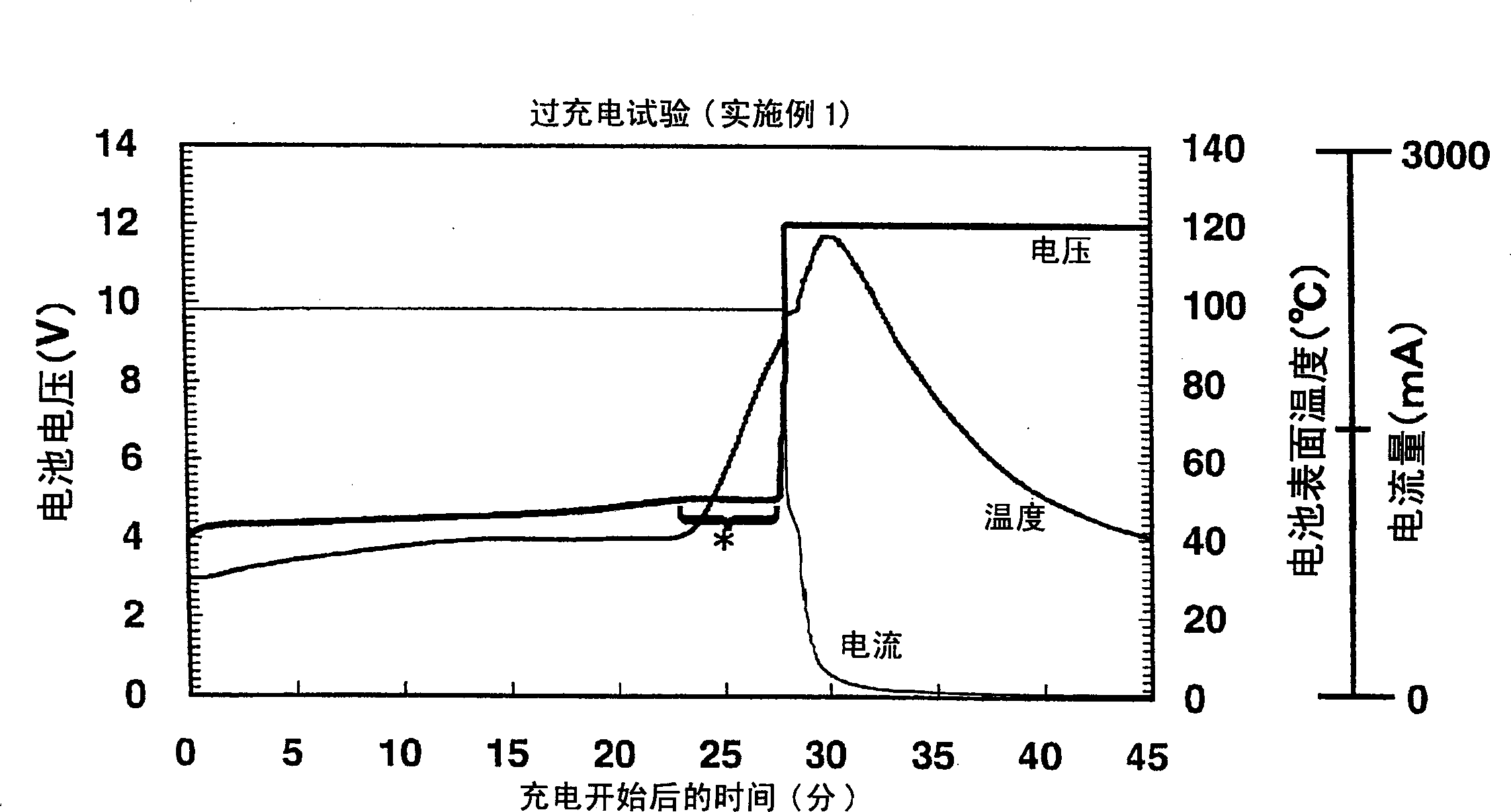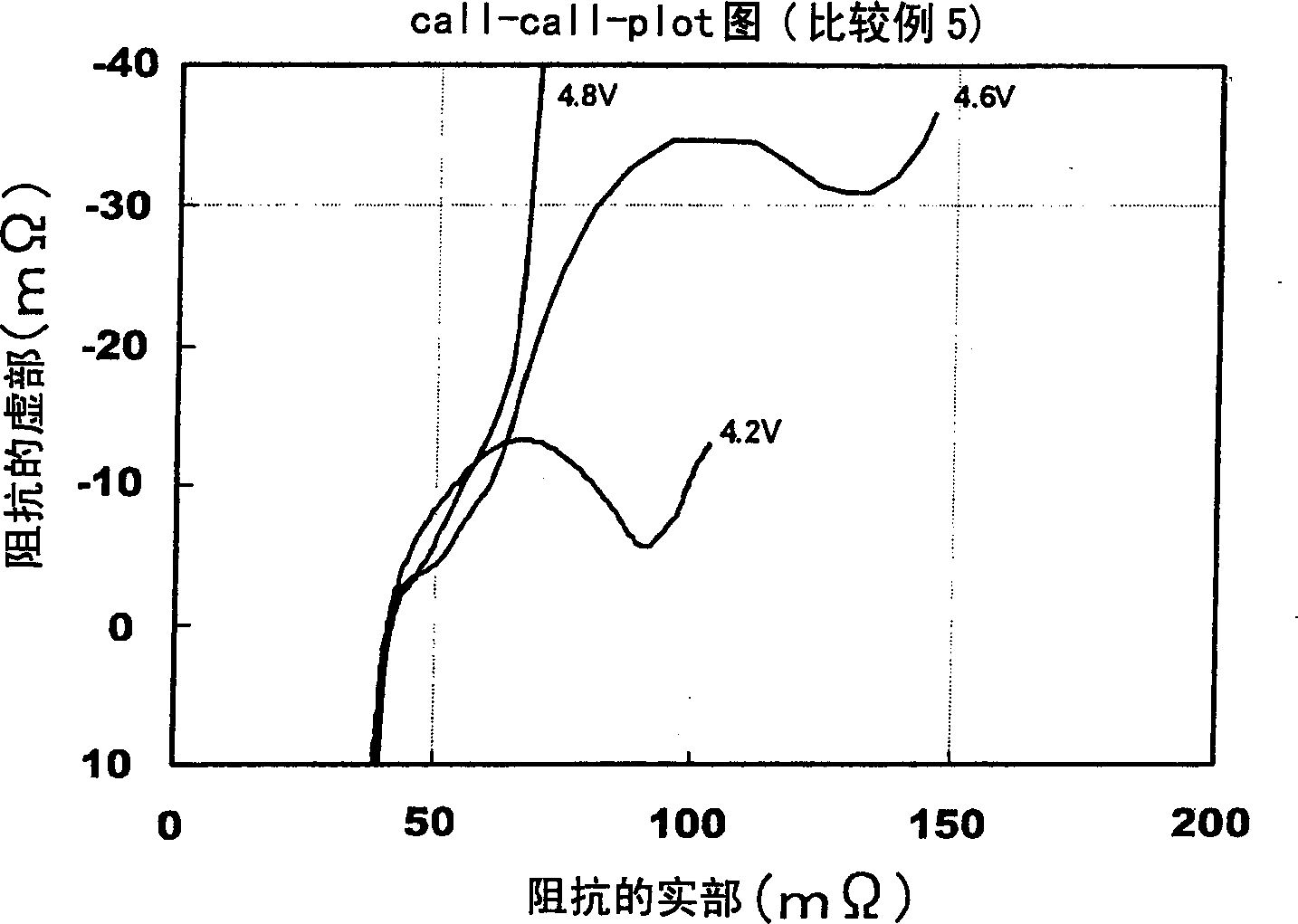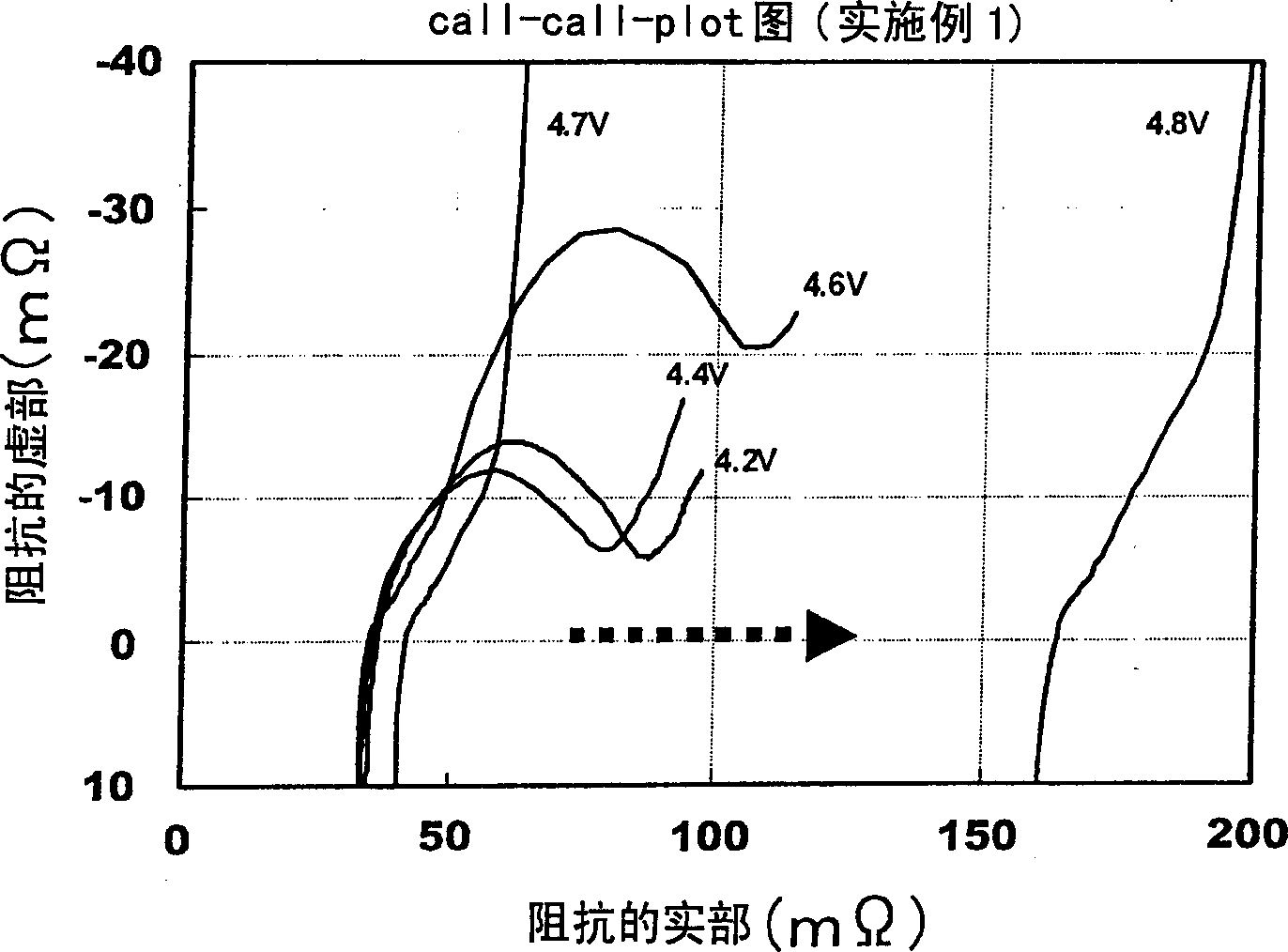Lithium secondary battery
A lithium secondary battery, potential technology, applied in the direction of secondary battery, lithium storage battery, secondary battery repair/maintenance, etc., can solve the problem of battery rupture, no overcharge safety, fire and other problems
- Summary
- Abstract
- Description
- Claims
- Application Information
AI Technical Summary
Problems solved by technology
Method used
Image
Examples
Embodiment 1
[0027] The lithium secondary battery of Example 1 was fabricated as described below.
[0028] Make positive electrode
[0029] The positive electrode active material lithium cobaltate and the carbon conductive agent graphite were mixed at a mass ratio of 92:54 to make positive electrode mixture powder, which was filled into a mixing device (Mekanofujiyon device (AM-15F) manufactured by Hosokawa Micron Co., Ltd.). The mixing device was operated at a rotational speed of 1500 rpm (rev / min) for 10 minutes to apply compression, impact and shear force to the above powder to prepare a mixed positive electrode active material. This mixed positive electrode active material and fluorine-containing resin binder (polyvinylidene chloride: PVDF) are mixed in N-methylpyrrolidone (NMP) solvent by the mass ratio of 97:3, make positive electrode mixture slurry, this The slurry is coated on both sides of the aluminum foil, dried and then rolled to make a positive plate.
[0030] Make negat...
Embodiment 2
[0037]Except using tetrahydrofuran (THF) instead of 1,2-dimethoxyethane (DME) in the electrolytic solution, the same operation as in Example 1 was performed to manufacture a battery.
Embodiment 3
[0039] A battery was fabricated in the same manner as in Example 1 except that 2-methyltetrahydrofuran (2-MeTHF) was used instead of 1,2-dimethoxyethane (DME) in the electrolyte.
PUM
 Login to View More
Login to View More Abstract
Description
Claims
Application Information
 Login to View More
Login to View More - R&D
- Intellectual Property
- Life Sciences
- Materials
- Tech Scout
- Unparalleled Data Quality
- Higher Quality Content
- 60% Fewer Hallucinations
Browse by: Latest US Patents, China's latest patents, Technical Efficacy Thesaurus, Application Domain, Technology Topic, Popular Technical Reports.
© 2025 PatSnap. All rights reserved.Legal|Privacy policy|Modern Slavery Act Transparency Statement|Sitemap|About US| Contact US: help@patsnap.com



